
MAY CONTAIN NUTS

Search Shorpy
SHORPY ART

Framed or unframed, desk size to sofa size, printed by us in Arizona and Alabama since 2007. Explore now.
Join and Share
Ad-Free Shorpy
Shorpy is funded by you. Patreon contributors get an ad-free experience.
Learn more.

Recent comments
- Freeze Frame
- Texas Flyer wanted
- Just a Year Too Soon
- WWII -- Replacing men with women at the railroad crossing.
- Yes, Icing
- You kids drive me nuts!
- NOT An Easy Job
- I wonder
- Just add window boxes
- Icing Platform?
- Indiana Harbor Belt abides
- Freezing haze
- Corrections (for those who care)
- C&NW at Nelson
- Fallen Flags
- A dangerous job made worse
- Water Stop
- Passenger trains have right of way over freights?
- Coal
- Never ceases to amaze me.
- Still chuggin' (in model form)
- Great shot
- Westerly Breeze
- For the men, a trapeze
- Tickled
- Sense of loneliness ...
- 2 cents
- Charm City
- What an Outrage
- Brighton Park
Member Photos
The Shorpy
Print Emporium
Print Emporium
Search Shorpy
Search results -- 30 results per page
- The Metropole: 1915
- ... down to the bottom using kelp and saw many beautiful fish.
120V Vestiges My house in California, built in 1954, was ... Posted by Dave - 07/08/2018 - 8:20pm -
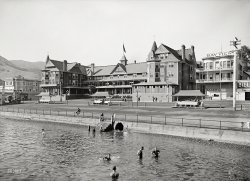
- Drop Me a Line: 1915
- ... great many people stop at Broad Channel in the summer, and fish, mostly with improvised lines, from the two bridges at either end of the ... Posted by Dave - 06/04/2011 - 10:13pm -
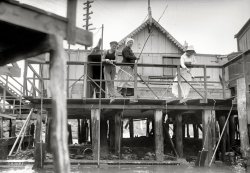
- Seafood City: 1943
- June 1943. "A scene at the Fulton Fish Market, New York." Medium format negative by Gordon Parks for the Office ... on in Manhattan at four a.m. I've been down to the Fulton Fish Market."
Tender at the Bone , Ruth Reichl, page 8
(The ... Posted by Dave - 06/13/2012 - 8:19am -
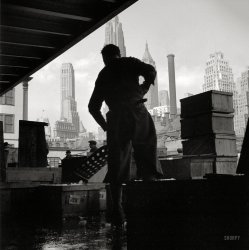
- Green Acres: 1937
- ... USA
That old patched up rowboat must have brought fish home for dinner from Bartlett Lake.
(The Gallery, Cats, Kids, Russell ... Posted by Dave - 02/22/2018 - 12:57pm -
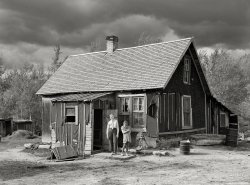
- DeLovely: 1904
- ... dropping bread in the crystal clear river and watching the fish grab the food.
At the time there was an abandon, two story, wood hotel ... Posted by Dave - 01/04/2013 - 8:55pm -
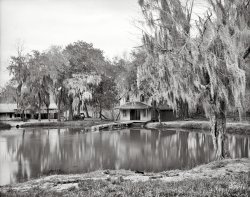
- Million-Dollar Pier: 1907
- ... John Young's 1,700-foot pier was a deep-sea net haul of fish from the far end. Detroit Publishing glass negative. View full size. ... Posted by Dave - 12/01/2011 - 1:07pm -
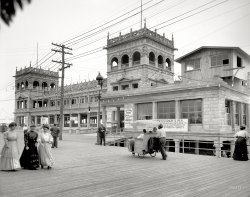
- Buffalo Dredging: 1905
- ... the '60s (long after this picture was taken) we boys would fish from this breakwall. The local rowing club would practice in the canal as ... Posted by Dave - 03/10/2021 - 4:02pm -

- Sleeps With the Fishes: 1940
- July 1938. "Man sleeping in the Baltimore fish market." 35mm nitrate negative by Sheldon Dick for the Farm Security ... My grandfather owned a stall in the old Baltimore fish market. My father worked there as a kid. I'm looking for any other ... Posted by Dave - 10/06/2018 - 9:38am -
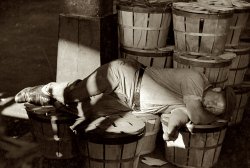
- Downtown: 1962
- ... world.
Just out of frame on the left is the Fulton Fish Market and assorted fish related business - trawlers still land along the shore - This area was ... Posted by Dave - 03/16/2017 - 8:56am -
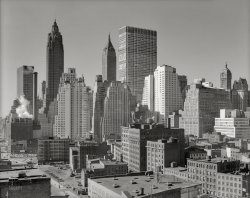
- Apples and Oranges: 1943
- ... New York, May 1943. "Pushcart fruit vendor at the Fulton Fish Market." Photo by Gordon Parks for the Office of War Information. View ... Posted by Dave - 08/21/2012 - 7:50pm -
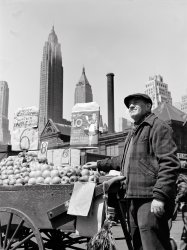
- Radio Nut: 1924
- ... homebrew circuitry into odd, discarded containers. Tuna fish cans are a favorite, although things get a little funky once the resistors ... Posted by Dave - 08/22/2013 - 7:38am -
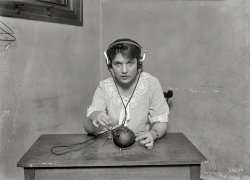
- Look What We Got!
- ... maybe, or Twentynine Palms -- give or take. Nice looking fish guys. Beautiful sightseeing. Miss it muchly.
Ten years after This ... Posted by Dave - 09/07/2011 - 10:20pm -
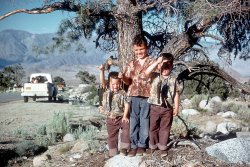
- The Eerie Orb: 1925
- ... left.
Question So how do you get the water and fish in?
Mystery solved This is (allegedly) the world's largest perfect ... Posted by Dave - 01/27/2014 - 11:54am -
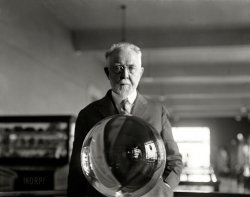
- Family Getaway: 1915
- ... A cottage in the Jamaica Bay island colony, where the fish are biting and the sweaters need mending. 5x7 glass negative, Bain New ... Posted by Dave - 08/19/2012 - 5:21pm -
![Family Getaway: 1915 Queens County, New York, circa 1915. "At Broad Channel, in the living room." A cottage in the Jamaica Bay island colony, where the fish are biting and the sweaters need mending. 5x7 glass negative, Bain New Service. View full size.
Different Priorities The sweaters may be attended to, but the rug is certainly threadbare.
Old ShoesI find it fascinating to look at the shoes in these old photographs. The child on the left, and the woman darning both have nice shoes. The other three? I should think even the least fastidious of modern folk would throw them away, and certainly not wear them in the house - not even a beach house.
I realise that hand-made shoes were quite expensive, but other than the shoes these women and children are relatively well dressed, their clothing is clean and so are there surroundings. I just find it jarring to see those worn-out shoes, particularly those of the child in the middle and the woman to the right.
Happy Family SpecialI'm not judging, but these appear to be very humble people considering their feed sack dresses, worn shoes, dust caps, etc. Still, there is a look of genuine contentment and serenity on every face. All are engaged in doing something, be it designing a fishing line, repairing old clothes, reading about the Broad Channel Yacht Club she cannot join or playing with gremlins (or whatever they are) like the little girl bookends. Gotta wonder if Dad was taking the picture. Some of the adult happiness may have been induced by the almost-gone bottle of liquor on the top shelf. I really like these people and their attitude. Thanks Shorpy.
[The photo was taken by Bain News Service. These were people who could afford a second home, or to rent a cottage on the water. - Dave]
Play clothesI think the kids have on their "play" shoes. I remember having to change my good shoes after school or church into my play clothes & shoes. Seems like these kids did too!
The ShoesFrom stories that my grandmother told me - she was born in 1906 - you didn't throw anything away back then. No matter how much money you had. They did not have the casual "it's worn a little bit, let's throw it away" attitude that today's consumers have. If these are vacationers as one commenter suggested, and were on the water to have a good time, I'm sure that Mom would have commanded the kids to wear their "old" shoes. Why ruin the good Sunday best shoes while out fishing while on holiday?
(The Gallery, G.G. Bain, NYC, Travel & Vacation)](https://www.shorpy.com/files/images/19852u.thumbnail.jpg)
- Cooley Airship: 1910
- ... with one big plane extending downward like the fin of a fish, and various small planes, or sails, are rigged on the 15-foot pole ... Posted by Dave - 10/01/2012 - 12:08am -
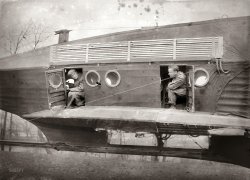
- Elko Tango: 1940
- ... An old (probably new at the time the picture was taken) fish bowl gas pump half way down the street in front of the John Deere store. ... Posted by Dave - 01/31/2018 - 10:17pm -
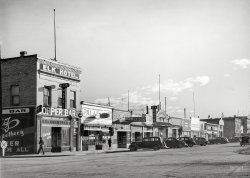
- Detroiter and Argo: 1915
- ... use being Jewish to separate meat from dairy, more like fish, eggs and dairy products. It is also the part of many restaurant names. ... Posted by Dave - 09/04/2012 - 9:38pm -
![Detroiter and Argo: 1915 Washington, D.C., circa 1915. "W.L. Smith agency, Argo cars, 14th Street N.W." Also home, as seen here earlier, to the Square Deal Auto Exchange. National Photo Company Collection glass negative. View full size.
Geyer's Beer Garden
Washington Post, Oct 7, 1909.
Geyer's Palm Garden.
F.H. Geyer has done much for upper Fourteenth street in the way of palm garden amusements for summer evenings. He purchased the place from George F. Kozel, and remodeled it, making it the best equipped in this vicinity. His winter palm garden, which has just opened, is one of the fashionable resorts of the northwest. The catering is excellent, seafood a speciality, and good music is always an attraction.
Washington Post, Oct 22, 1933.
Beer Gardens of Old Capital Added Froth to Life.
…
On Upper Fourteenth street, just below U, was the dandy of all beer gardens — Geyer's. Out in the back yard, covered with gravel that persistently got in low shoes, a band blared away while waiters rushed to and from with seidels, steins, and schooners. Geyer's was the Mecca for young love; for the young blades of the day. It was packed and jammed nightly.
Gentlemen!An early SCCA or IMSA gathering. The stretch of 14th (and 15th) out from Massachusetts Avenue seemed to attract auto sales emporiums. I remember them from when at SJC on Vermont Avenue back before time was invented.
Almost 100 years laterView Larger Map
As Seen on ShorpyMore on the Argo Cyclecar here and here.
A Quick GetawayLooks like the starting lineup of the Annual Al Capone 500.
Holy Cow - another dairy sign!I guess I've led a sheltered life or something. Seeing "Dairy Lunch" signs in at least a couple Shorpy photos and wasn't sure what it meant -- milkshakes? I did a little Internet searching and I see its use being Jewish to separate meat from dairy, more like fish, eggs and dairy products. It is also the part of many restaurant names. Anyone know more about this interesting term?
[More on the "dairy lunch" phenomenon here. - Dave]
Thanks Dave. In addition to the extra Dairy Lunch info you've provided, I also just discovered that I can add another comment below yours ... well, at least I hope so. I will find out if this comment shows up. Love this website!
(The Gallery, Cars, Trucks, Buses, D.C., Natl Photo)](https://www.shorpy.com/files/images/SHORPY_31804u.thumbnail.jpg)
- Free Hot Lunch: 1901
- ... to drink.
Dried Herring alias the Blind Robin a former fish imperfectly preserved in salt.
There were seasonal treats as well, ... Posted by Dave - 08/27/2020 - 4:17pm -
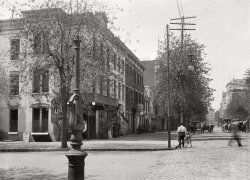
- High Water: 1903
- ... Cotton for sure, but letters to loved ones, heirlooms, fish and crabs and oysters, maybe some fruit. Much more romantic than a tug and ... Posted by Dave - 08/08/2016 - 5:24pm -
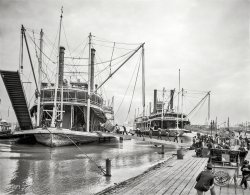
- High Sierra: 1930s
- ... either.
Re: Worm carrier They caught plenty of fish.
(ShorpyBlog, Member Gallery, Tonypix, Travel & Vacation) ... Posted by Tony W. - 09/17/2011 - 8:18pm -
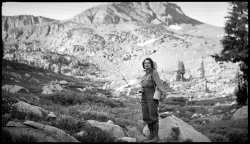
- Broom & Board: 1910
- ... Fuller: This is ghastly. The detail at the top resembles fish bones. The geometric shapes beneath the windows are weird too. And those ... Posted by Dave - 03/03/2021 - 12:34pm -
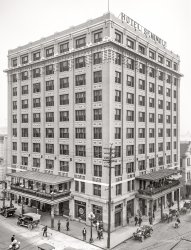
- Buy a Slug: 1941
- ... a fortress pay phone to make a free call, or trying to fish a coin out of the coin box. It's still on the books, at the Municipal ... Posted by Dave - 09/30/2019 - 1:54pm -
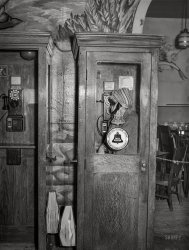
- Army Surplus: 1919
- ... the same as for the peas photo: "Buying Army food sold at fish market." Though the goods here seem to be blankets. View full size.
... Posted by Dave - 08/27/2012 - 3:21pm -
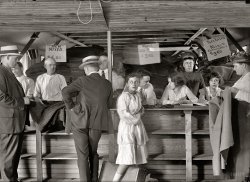
- Local Characters: 1938
- ... though the bakery (at 265) is long gone, but there's now a fish market at 263.
As for the faded wall signage on the grocery store, ... Posted by Dave - 11/27/2017 - 11:43am -
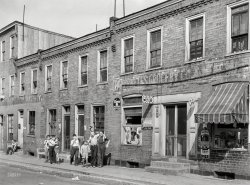
- Up Fifth: 1905
- ... stage I found an account of riding it by Hamilton Fish Armstrong, First World War diplomat; and editor of Foreign Affairs ... Posted by Dave - 08/05/2018 - 1:38pm -
![Up Fifth: 1905 New York circa 1905. "Up Fifth Avenue from 28th Street." With a view of Marble Collegiate Church. 8x10 glass negative, Detroit Publishing Co. View full size.
Horse-drawn busWas it cheaper to ride inside or on top? Maybe it depended on how much you annoyed the driver.
I see several women sitting on top. It must have been interesting watching them get up and down from that lofty perch.
[That's the Fifth Avenue Stage, also seen here. - Dave]
Removal SaleD.B. Bedell & Co. must have moved to West 34th St. soon after this photo was taken. The ad below is from the New York Daily Tribune on May 28, 1905.
Traveling lightAs usual with these old city scenes, I'm impressed with how unencumbered people are. Most are not carrying anything and have their arms free, including the women. The two foreground women's cinched waists illustrate the misery of wearing a tight corset.
Fifth Avenue stageI found an account of riding it by Hamilton Fish Armstrong, First World War diplomat; and editor of Foreign Affairs magazine 1928-1972.
http://stuffnobodycaresabout.com/2012/10/31/riding-a-turn-of-the-century...
Born in 1893, so his related experience would have been about 1902. The fare was five cents.
Silent FilmI noticed the ad for Marceau Photography — it must have been difficult for people to sit for a picture when the photographer was miming everything. How did they know if he was actually doing anything?
Yamanaka & Co.Just to the left of the stagecoach can be glimpsed the storefront of Yamanaka & Company. Sadajiro Yamanaka was one of the earliest dealers of Japanese art and antiquities in U.S. The Japanese and Chinese art he collected and sold was vital in the genesis of the impressive Asian art collections of the Metropolitan Museum, as well as the basis of the collection of the Smithsonian's Freer Gallery in Washington.
More recent view
(The Gallery, DPC, NYC, Stores & Markets)](https://www.shorpy.com/files/images/SHORPY-4a12410a.thumbnail.jpg)
- Two Forks: 1939
- ... still pined for that cool riverbank and a willow pole to fish with.
(The Gallery, Agriculture, Dorothea Lange, Handsome Rakes) ... Posted by Dave - 08/15/2008 - 9:52pm -
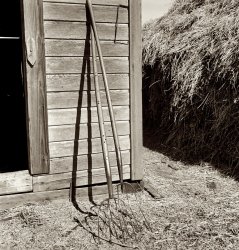
- Yuen Hing & Co.: 1921
- ... eat, if you are in the mood,
Shark-fin soup, bean cake fish.
The girl who serves you all your food
Is another tasty dish!
You ... Posted by Dave - 05/01/2015 - 2:05pm -
![Yuen Hing & Co.: 1921 "REO Speedwagon grocery truck, San Francisco, 1921." Compare with our previous Speedwagon. Glass negative by Christopher Helin. View full size.
Musically speaking,We're on Grant Avenue, San Francisco, California, USA.
[Most interesting. I wonder how one would travel there. - Dave]
[Ideally in a trolley, but you have to settle for a cable car. -tterrace]
Weather-beatenLots of mud splatters. Could be from riding the storm out.
Can't fight this feeling anymore...I like this truck.
Stopping distanceI wonder what the stopping distance was for one of these trucks when fully loaded, using rear wheel only mechanical brakes, on a steep San Francisco hill. Lots of smoke, then right into the Bay!
Having Learned To Drive in San FranciscoOne learned quickly the streets that were too steep to comfortably drive. Trucks, unless they were delivering locally, were usually banned from streets like Divisadero (seen in the movie "Bullit"). These delivery trucks usually had a "granny gear" which was a very low 1st gear and would hold the vehicle to a crawl when descending steep hills. Brakes were not usually needed.
Chinatown Telephone ExchangeOn the side door of the truck you can see the letters "PHONE CHINA" and the beginning of a numeral. San Francisco's Chinatown had its own telephone exchange from 1887 until the 1940s when dial phones replaced the switchboard operators. How it all worked is explained here.
A Hundred Million Miracles"Grant Avenue San Francisco" was in Rodgers and Hammerstein's Broadway hit "Flower Drum Song" from 1958. The film version released in 1961 was nominated for 11 Academy Awards.
Western street with Eastern manners,
Tall pagodas and golden banners,
Throw their shadows through the lantern glow.
You can shop for precious jade
or teakwood tables or silk brocade
Or see a bold and brassy night club show,
On the most exciting thoroughfare I know --
Grant Avenue, San Francisco,
California, U.S.A.
Looks down from Chinatown
Over a foggy bay.
You travel there in a trolley,
In a trolley up you climb,
Dong! Dong! You're in Hong Kong,
Having yourself a time.
You can eat, if you are in the mood,
Shark-fin soup, bean cake fish.
The girl who serves you all your food
Is another tasty dish!
You know that
You can't have a new way of living
Till you're living all the way
On Grant Avenue --Where is that?--
San Francisco, That's where's that!
California, U.S.A.!
(The Gallery, Cars, Trucks, Buses, Chris Helin, San Francisco, Stores & Markets)](https://www.shorpy.com/files/images/SHORPY-326-01.thumbnail.jpg)
- Pine & Second: 1943
- ... the corner on Pine St. Don't know which McGill sold fish. Cicero McGill was a shoe shiner at 580 Second Av. (next to Evelyn Fann's ... Posted by Dave - 09/05/2016 - 12:38am -
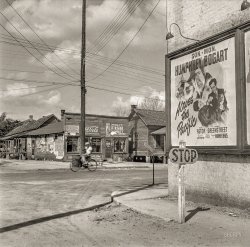
- Fancy Groceries: 1936
- ... your chickens still in their feathers, or your fresh fish, or your flank steak, or milk and butter and cheese, or lox and smoked ... Posted by Dave - 02/05/2015 - 11:22am -
![Fancy Groceries: 1936 December 1936. "Scene along Bathgate Avenue in the Bronx, a section from which many of the New Jersey homesteaders have come." Photo by Arthur Rothstein for the Resettlement Administration, which used these pictures as examples of the supposed squalor from which it was rescuing its clients -- second-generation Jewish immigrant families -- by relocating them to the suburbs. View full size.
Rosenbaum's Dairywas located at 1619 Bathgate Avenue, Bronx NY according to the 1940 NY Telephone Directory. JErome 7-7139. All gone now.
Staged SceneLooks like a staged street scene judging from the very nice clothing being worn by the people.
[That's normal garb for the period and circumstances. -tterrace]
Not too shabbyI would agree that the street was very messy and unkempt but all of the people are neatly and warmly dressed and do not appear to be living in squalor. Everyone has warm coats, hats and shoes, including the two school girls carrying their books through the crowd. People are even paying attention to the vendors selling their wares from sheets on the streets (they used pushcarts on the lower east side, even into the 1950's and 60's). By employing a street cleaner, this scene could be much tidier.
Squalor?Somebody grab a broom - problem solved. Careful, don't sweep up that logo.
Expensive Butter?Both of my inflation calculators say that $.27 in 1936 translates to $6.30 today. That means it was fairly expensive at the bottom of the Great Depression.
Billy BathgateThe hero of Billy Bathgate (1989) by E.L. Doctorow, set in the year before this photo was taken, is named for Bathgate Avenue in the Bronx. In one section of the novel, the teen narrator differentiates between the street vendors, with their pushcarts and open stalls, and the "aristocracy of the business" who had "real stores where you walked in and bought your chickens still in their feathers, or your fresh fish, or your flank steak, or milk and butter and cheese, or lox and smoked whitefish and pickles."
(The Gallery, NYC, Stores & Markets)](https://www.shorpy.com/files/images/SHORPY-8b28415a.thumbnail.jpg)
- Fancy Fruits: 1925
- ... Notice the dude on the roof of the Standard Fish & Produce warehouse. Also note the second-floor door on the building ... Posted by Dave - 08/07/2012 - 2:38am -
![Fancy Fruits: 1925 Washington, D.C., circa 1925. "Semmes Motor Co. George K. Chaconas & Co. truck." A Dodge delivery van for the grocery owned by George Chaconas. National Photo Company Collection glass negative. View full size.
Strange NeighborhoodNotice the dude on the roof of the Standard Fish & Produce warehouse. Also note the second-floor door on the building on the right. Also, a lot of the upper story windows are broken The cursive lettering on the Chaconas & Co. Dodge is exquisite.
[Also the odd corrugated metal bay tacked onto the building. It looks like two elf-size floors crammed into one. (Reminds me of Dr. Lester's office on the 7½ floor in "Being John Malkovich.") And to the right, chickens in crates. - Dave]
Just how "fancy"?Whenever I see a sign like this I think: What did they mean by this statement?
Just how fancy were their fruits & vegetables? Did they dress them up in little outfits complete with hats, gloves & spats? Maybe "fancy" meant that these fruits & vegetables "knew the right people" and had "connections". Or perhaps their fruits & vegetables were "fancy" because they had an education and thought they were better than the other fruits & vegetables!
LocationLooks like this is located on old Indiana Avenue. you can see the old post office pavilion tower in the background, and Indiana Avenue was one of the few in the District with center parking (landscaped median). Now the location of Federal Triangle.
(The Gallery, Cars, Trucks, Buses, D.C., Natl Photo, Stores & Markets)](https://www.shorpy.com/files/images/32491u.thumbnail.jpg)























